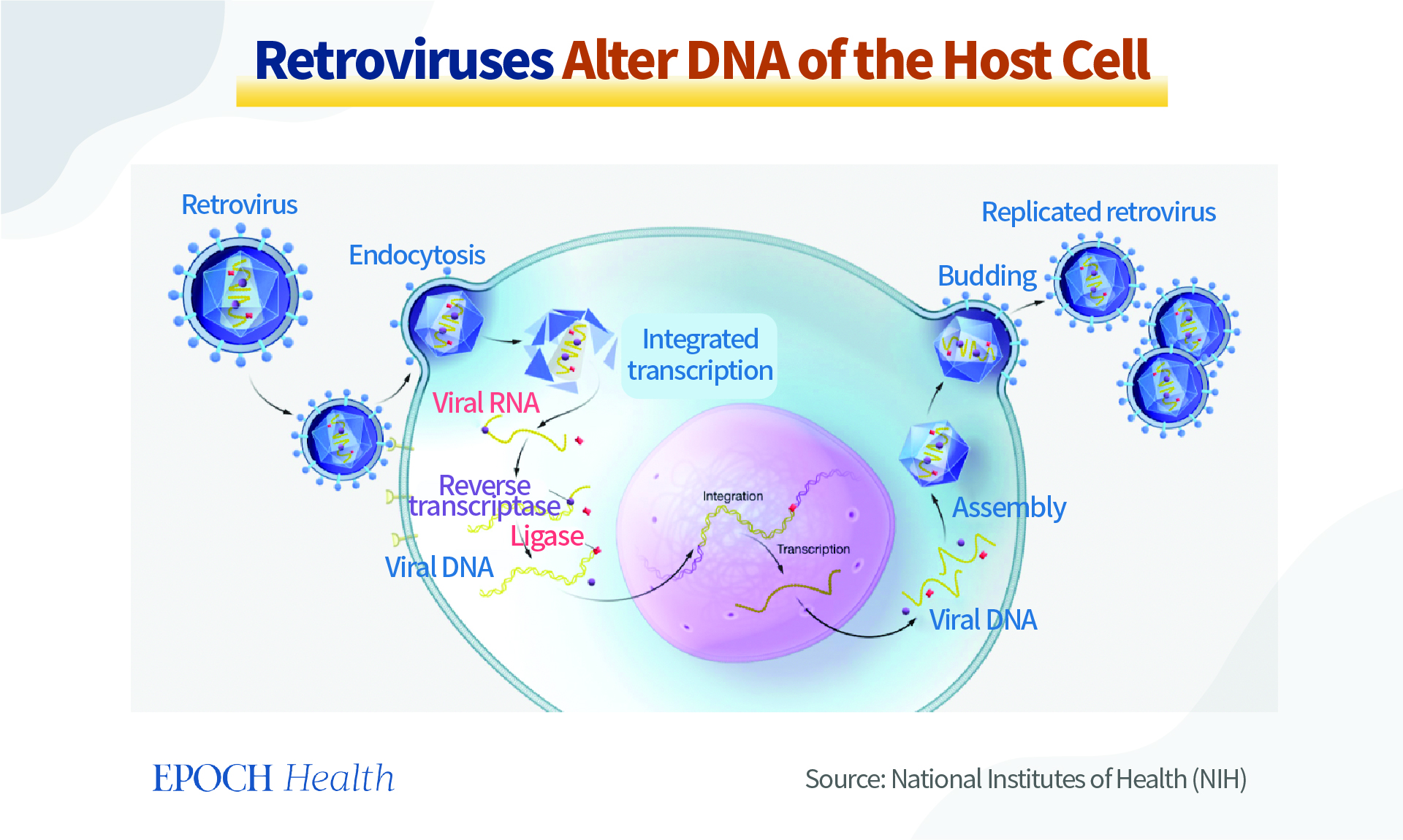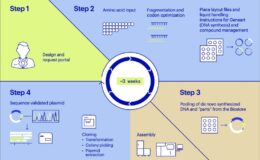
The concept that microbes such as those in the gut and skin contribute to human health is not new. In fact, scientists have also discovered that hundreds of thousands of DNA fragments in the human body are derived from viruses; these fragments were embedded in the human body long ago and passed down from generation to generation; and these DNA fragments and the viruses from which they are derived are known as “endogenous retroviruses”.
What do these viral DNA do to the human body? It was not until recent years that people discovered that these foreign genetic materials may also play a role in boosting human immunity.
Yuanyu Jeng, a former attending physician at the Department of Infectious Disease of Taipei Veterans General Hospital, explained this topic in detail.
A Study in the Science Journal: Fragments of Viral DNA Protect Against Viral Infection
A study published in Science in October 2022 pointed out that a protein called Suppressyn can protect human cells from RD114 virus infection.
Suppressyn can be produced by the human body itself, but scientists have found through in-depth analysis that the DNA that produces Suppressyn in the human body was introduced by a virus. They believe that the process of virus invasion occurred in our ancestors. The virus can be passed from generation to generation since it infects germ cells, to begin with. So today, humans generally possess this viral gene.
Therefore, everyone is born with viral genes inherited from their ancestors. Studies have now found that about 8 percent of the genetic information in human DNA is composed of endogenous retroviruses.
How Does Retroviral Invasion Alter Cellular DNA?
The human body can produce ribonucleic acid (RNA) with reference to the genetic information of DNA, thereby producing the essential substance that constitutes the human body—proteins. “Transcription” refers to the process by which the human body makes RNA with reference to DNA.
Naturally, the DNA of the human body needs to be protected, so scientists used to believe that the process of transcribing DNA into RNA is unidirectional and irreversible.
However, scientists were taken by surprise by the discovery of “retroviruses”, as these viruses can use human cells with reference to their own RNA, make DNA fragments with viruses, and place them in the DNA of cells. In other words, it is possible for the DNA in the cells of an organism to be invaded and altered.
Simply put, retroviruses can insert their own genetic information into the DNA of human cells, thereby changing their DNA.
The HIV virus that causes AIDS and the hepatitis B virus that causes hepatitis are common retroviruses.

Can Viruses That Alter Human DNA Turn People Into ‘Mutants’?
After the human DNA is altered, will people be transformed into “mutants”, “cyborgs” or “zombies” as seen in movies?
Of course not.
For example, the hepatitis B virus only alters liver cells, while HIV targets helper T cells. The DNA of other cells in the body is not altered. In other words, the DNA of the patient’s offspring will not be affected by the viruses.
However, if a retrovirus infects germ cells, such as spermatogonia or oogonia, and alters their DNA, the alterations can be passed on to the patient’s offspring and then passed down from generation to generation.
Thus, all of us are born with viral DNA that we inherited from our ancestors who were infected with the virus. They are named “endogenous” retroviruses, as the DNA information of these viruses is “naturally” present in our bodies.
Tracing back to the origin, the endogenous retroviral fragments in human DNA were acquired from external infection by our ancestors. Other animals, including pigs, monkeys, and orangutans, also contain endogenous retrovirus information in their DNA.
Can Viral Genes Inherited From Our Ancestors Still Cause Infection?
When it was first discovered that there were fragments of foreign viruses in human DNA, scientists thought that they might just be “fossils” left over from ancient viruses and were non-functional. Basically, humans or other animals survive after overcoming these viral infections, but they cannot get rid of the foreign DNA, so they remain in the DNA like “residues”.
Human endogenous retroviruses have not been found to be pathogenic or infectious, but it has been confirmed that human cells can produce a viral entity called human endogenous retrovirus K.
Although this is the only complete virus discovered so far, endogenous retroviruses actually account for up to 8 percent of human DNA; other parts of retroviruses, such as RNA fragments and protein particles, can also be made from human cells.
Looking at it from another perspective, in the process of entering human cells and passing on from generation to generation, some of the DNA of these viruses have become incomplete, some have become inactive, and some are even beneficial to humans.
Endogenous Retroviruses Have Both Good and Bad Effects on the Human Body
As an example, the body produces a protein called syncytin that stabilizes the placental structure. Without syncytin, pregnant women will experience placenta-related conditions and diseases, such as miscarriage, fetal growth restriction, and preeclampsia.
Studies have found that the gene that encodes syncytin is brought by an endogenous retrovirus, and syncytin has been a crucial stability factor for human reproduction.
However, some diseases, including multiple sclerosis, schizophrenia, and bipolar disorder, may be associated with syncytin abnormalities in the nervous system.
Studies also found that some other endogenous retroviral components may also be related to autoimmune diseases, including Type 1 diabetes and rheumatoid arthritis.
It is conceivable that the viral genes inherited by human beings were originally “invaders” to our ancestors. After being passed down from generation to generation, the immune system gradually tolerates the existence of these genes.
Then, is it possible for the immune system to regard these viral genes as foreign “invaders” and launch an attack, thereby causing autoimmune diseases? In this regard, current studies have found a preliminary association.
However, just like the principle of “mutual promotion and mutual restraint” taught by Taoism, there are always pros and cons to everything.
If the downside of a viral gene embedded in human DNA is autoimmune diseases, what is the upside? Well, it allows the immune system to respond earlier by simulating an environment in the body similar to a viral invasion.
Endogenous Retroviruses Use Ordinary Cells to Fight Viruses
Speaking of the benefits of endogenous retroviral genes to the human body, the aforementioned Science study has found that a protein derived from endogenous retroviral genes, Suppressyn, has antiviral properties.
The study also found that placental and embryonic stem cells have high levels of Suppressyn gene expression, which makes the Suppressyn protein. In other words, the human body already has the ability to fight against viruses when it is still in the embryonic stage, which was never thought of in the past.
So, how does Suppressyn fight viral infections?
The RD114 virus detected by the researchers is a common virus in feline species, such as domestic cats. The virus can bind to the ASCT2 receptor on the surface of human cells and infect the cells. Suppressyn can interfere with the binding process of RD114 virus and ASCT2 receptor, thus preventing the virus from infecting the cells.
Of course, Suppressyn’s antiviral properties are just an example. There are more than 100,000 DNA fragments of endogenous retroviruses in the human body, and they help the immune system to fight against viruses in more than one way.
For instance, virus invasion will stimulate the body to produce antibodies with high binding capacity. It is one of the functions of the acquired immune system.
Why is it called “acquired” immunity? This is because when the human body is exposed to a pathogen, the immune system needs to identify the characteristics of the pathogen before it can make antibodies through “acquired learning”. Hence, it takes time for the human body to make antibodies, and antibodies can only fight against one specific target.
However, after the virus invades the human body, it also produces a substance called double-stranded RNA, which can trigger and activate the innate immune system and enhance antiviral capabilities. The innate immune response has a broad effect as the process does not require the identification of specific characteristics of the virus. Innate immunity can quickly fight viral infections when acquired immunity fails.
Studies found that some cells will activate the endogenous retroviral genes, express double-stranded RNA, and call on the immune system to make a stronger response when foreign viruses invade. Such findings were seen in cell experiments with influenza A.
The endogenous retroviruses of human DNA also have other ways of fighting viruses, such as the “receptor interference” described below.
There are many complex steps in the process by which a virus invades a cell, replicates in large numbers, and then leaves the cell. Human cells can use the endogenous retroviral genes to produce a variety of virus-like components that can occupy the positions where viruses need to bind, such as the cellular entry receptors or the exit pathways. There are also components that can interfere with viral activity, such as the process of viral replication.
In fact, every cell in the human body has a complete set of DNA information, including DNA fragments of all endogenous retroviruses. In theory, many cells in the body have the potential to utilize these viral DNAs. This is equivalent to launching an “all-out anti-virus defense” with ordinary cells of the human body, instead of relying only on immune cells.
Endogenous Retroviruses May Be Useful in Detecting Cancer
Fragments of endogenous retroviruses in human DNA may have another application.
It has been found that cancer cells are particularly prone to activating the expression of these endogenous retroviral genes. It is uncertain whether the cells deteriorate and become cancerous because these genes are activated abnormally, or whether the cancer cells have these genes activated.
In any case, there is one more identifiable difference between cancer cells and normal cells that we may be able to utilize. This is because the expression products of these genes are ancient viral components, and on the basis of existing cancer immunotherapy, they can induce the immune system to target the endogenous retroviral genes that are activated in cancer cells. It is a promising approach to cancer treatment.














